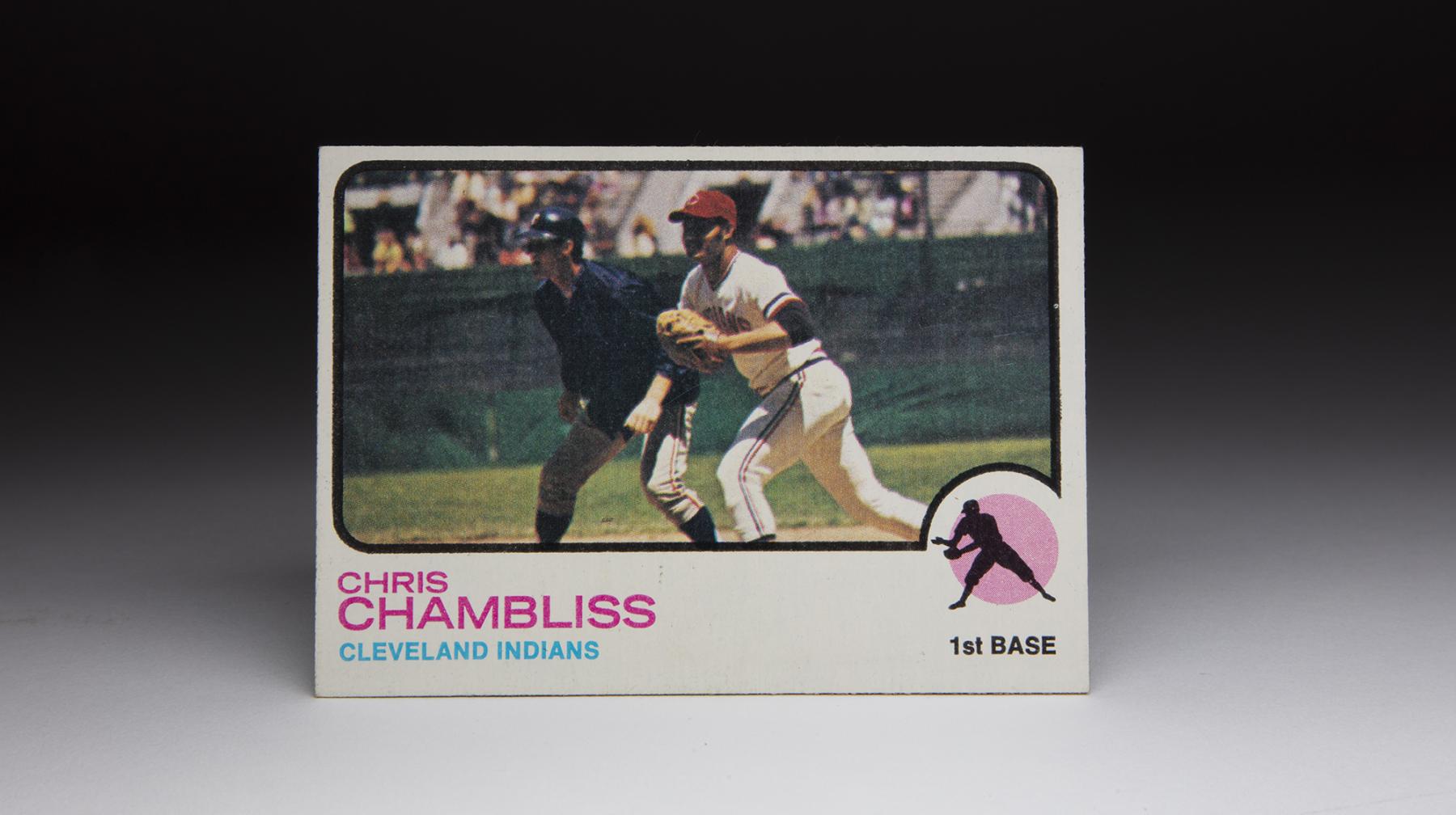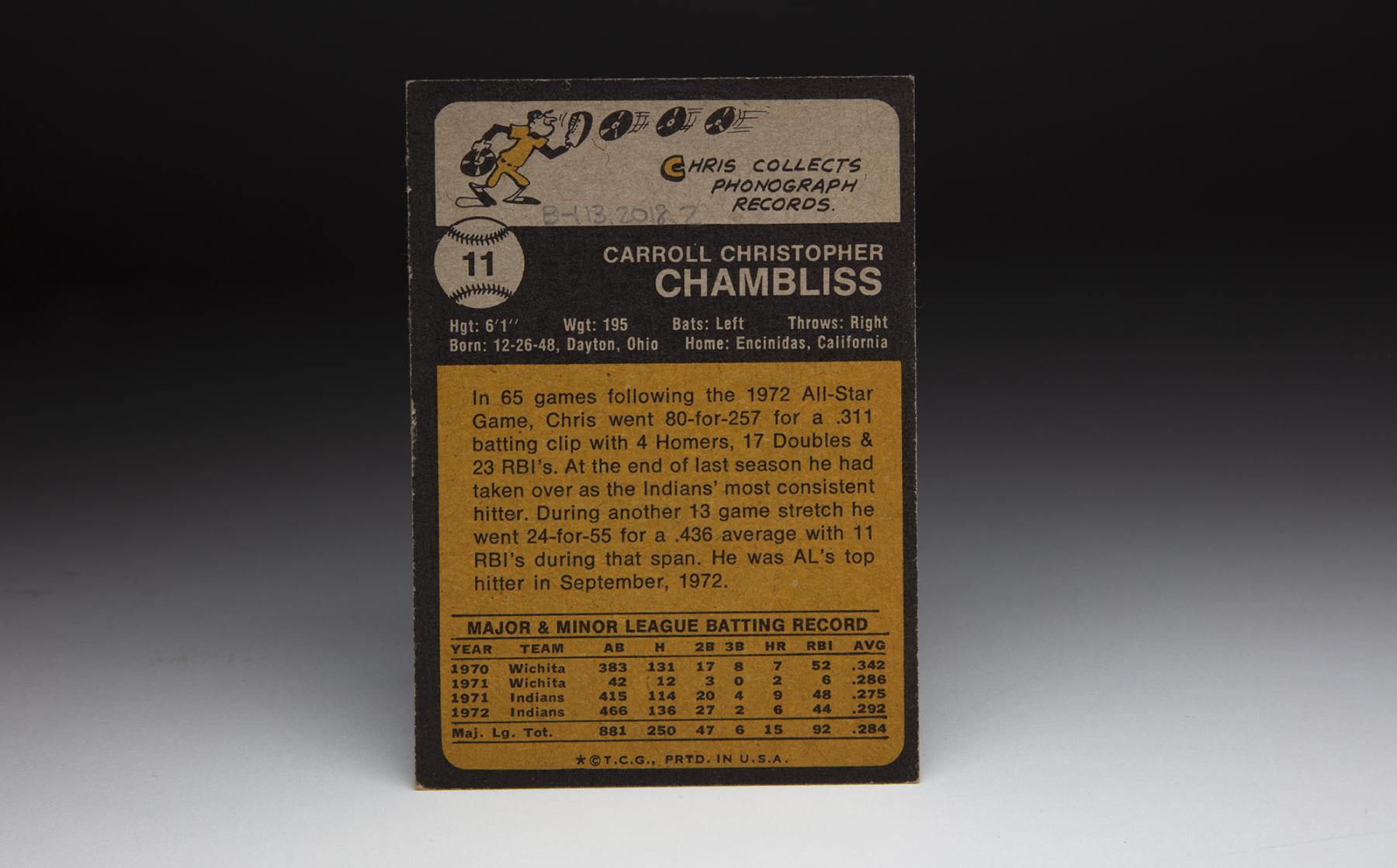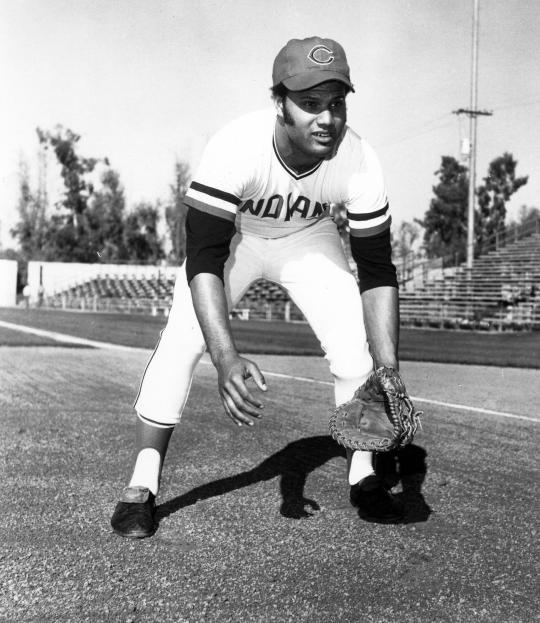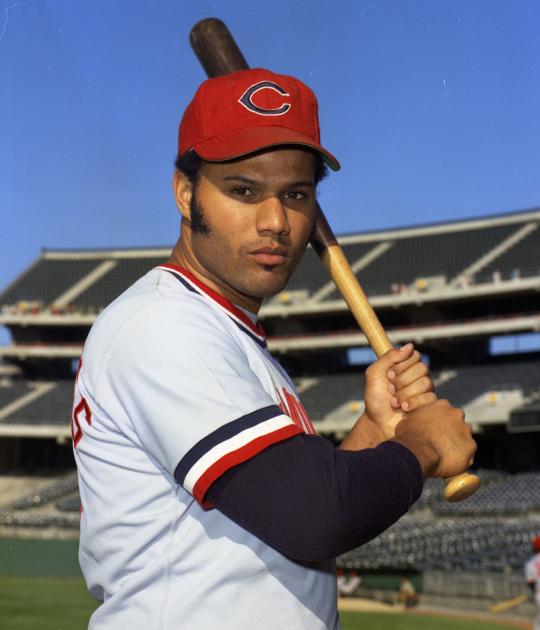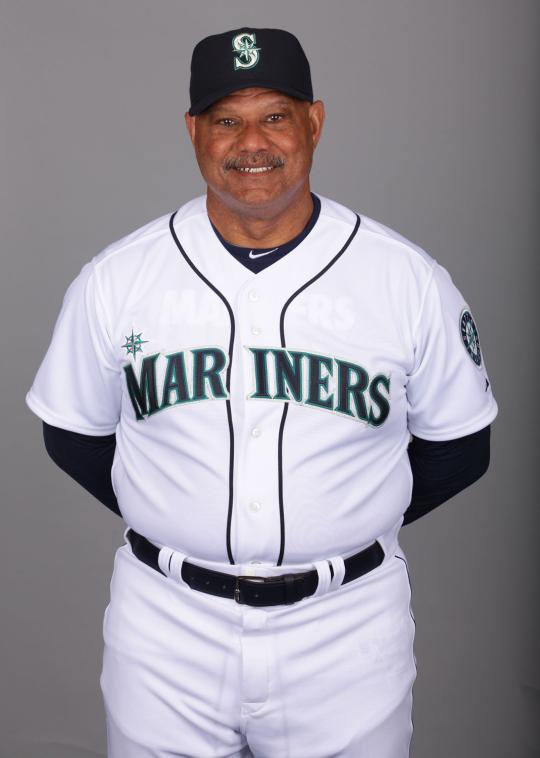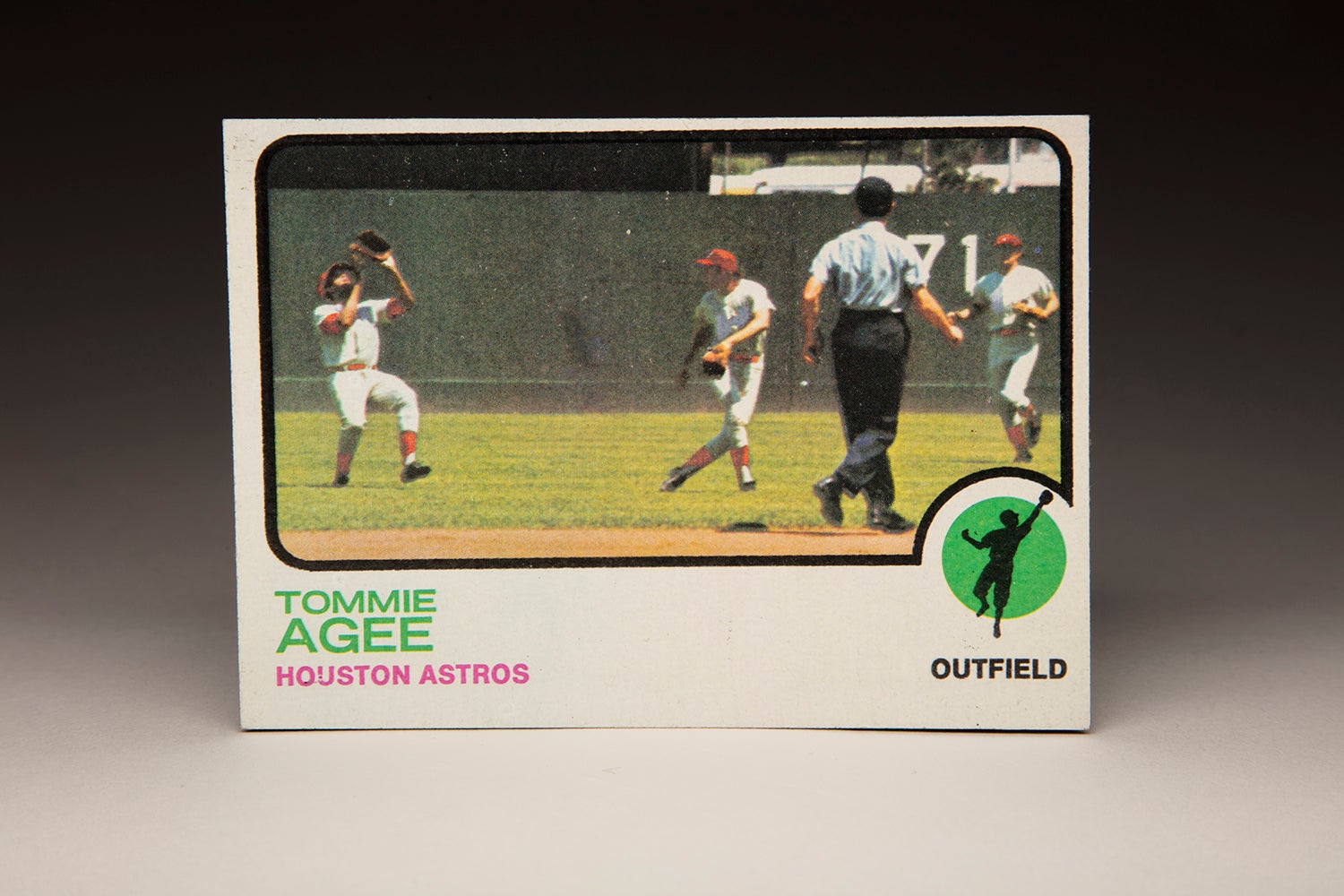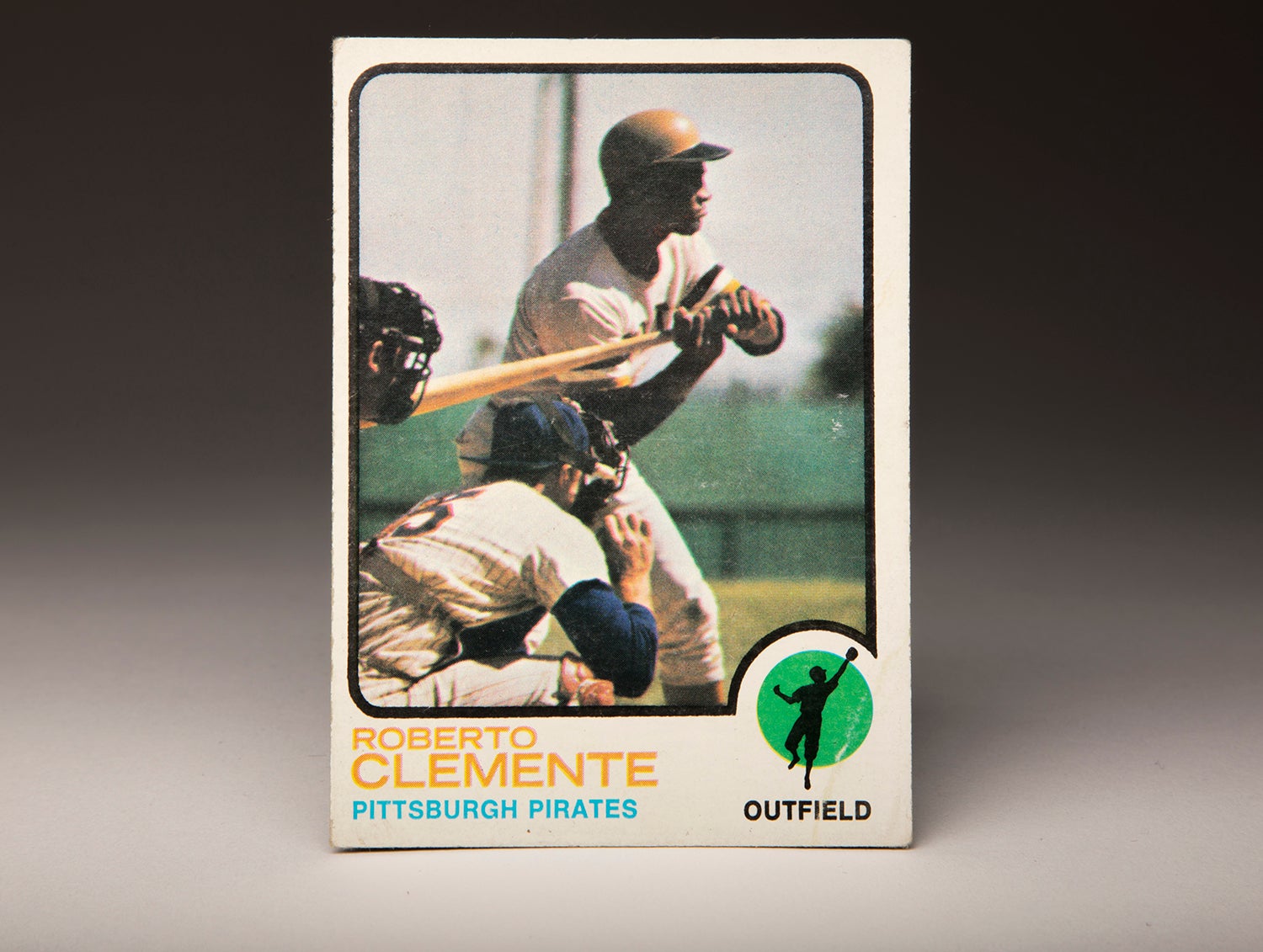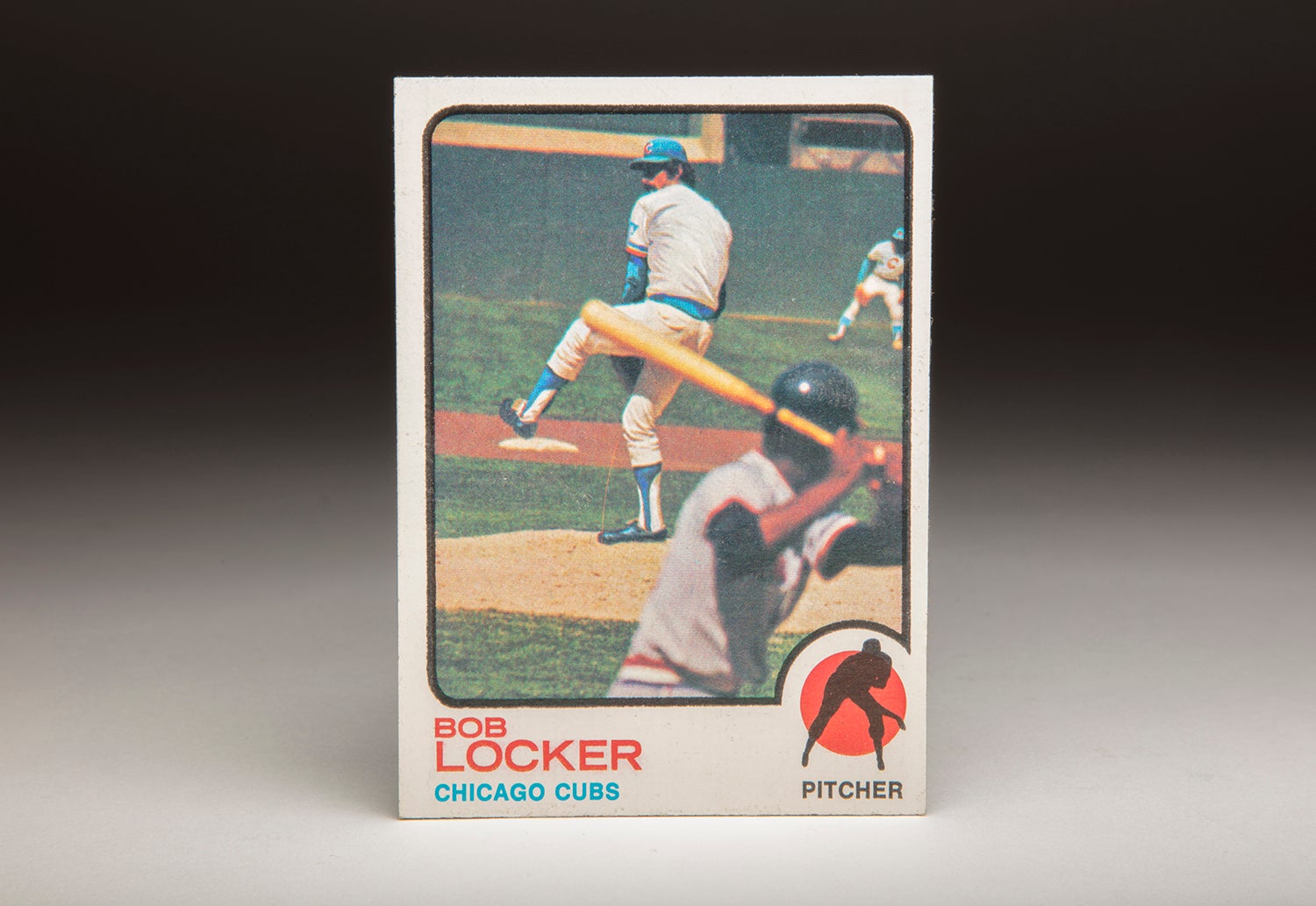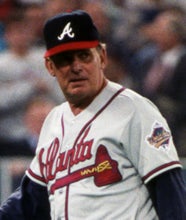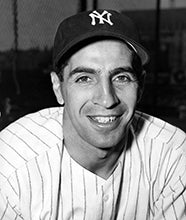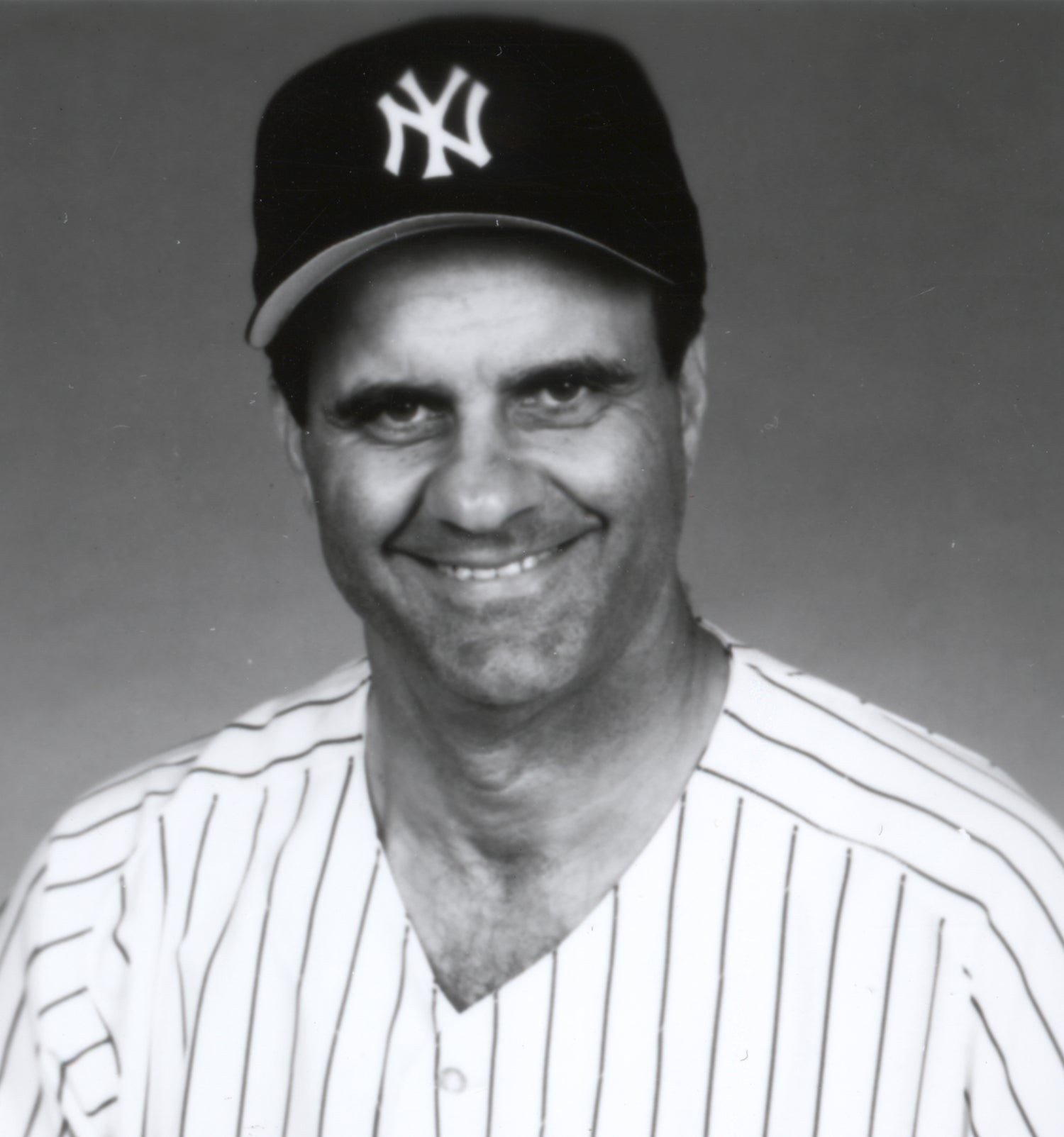- Home
- Our Stories
- #CardCorner: 1973 Topps Chris Chambliss
#CardCorner: 1973 Topps Chris Chambliss
The New York Yankees had gone nine seasons without an American League pennant by the spring of 1974. But after challenging for the AL East title throughout most of the 1973 campaign, the veteran players in the New York clubhouse believed they were close to a breakthrough.
On April 26, 1974, all that goodwill came crashing down when Yankees president Gabe Paul sent pitchers Fred Beene, Tom Buskey, Steve Kline and Fritz Petersen to the Indians.
“I feel like someone just hit me in the gut,” Yankees pitcher Mel Stottlemyre, who worked a complete game in New York’s 4-3 win over Texas that night, told the Journal News after learning about the trade moments after leaving the field. “I really don’t care about the game. We won, but…”
The mood was subdued throughout the clubhouse as the four veteran Yankees packed for Cleveland. But what the rest of the team could not have known that one of the three players Paul received in return – quiet first baseman Chris Chambliss – would be the foundation of what would become a new Yankees dynasty.
Born Dec. 26, 1948, in Dayton, Ohio, Carroll Christopher Chambliss and his family moved often in his youth. His father, a Navy chaplain, was eventually assigned to Marine Corps Base Camp Pendleton in San Diego County, and Chambliss attended high school in nearby Oceanside, where he excelled in multiple sports.
Hall of Fame Membership
There is no simpler, and more essential, way to demonstrate your support than to sign on as a Museum Member.
Following graduation, Chambliss enrolled at Oceanside’s MiraCosta Junior College, where he starred on the diamond. He was drafted by the Cincinnati Reds in the 31st round of the 1967 MLB Draft but did not sign, then was selected by the Reds again in the second round of the January 1968 MLB Draft. Once again, Chambliss opted to remain in school.
Chambliss hit .485 in 1968 for MiraCosta – his second straight year of hitting better than .400 – earning Desert Conference Player of the Year honors. He then transferred to UCLA, setting a new Pac-8 record with 10 home runs – finishing the season with 15 total – in conference play in 1969. He spent the summer playing ball in Alaska, winning National Baseball Congress Player of the Year honors.
“Right now, everything is up in the air,” Chambliss told the Los Angeles Times about his future plans as the 1969 season concluded. “If I get a really good offer, I’ll probably sign.”
When the Indians selected Chambliss with the first overall pick in the January 1970 MLB Draft, the big first baseman turned pro.
The Indians sent Chambliss to Triple-A Wichita in 1970, where he led the American Association with a .342 batting average while hitting seven home runs and totaling 52 RBI en route to the league’s Rookie of the Year Award. He also tried his hand in the outfield, as the Indians thought he might have a future there.
A leg injury slowed Chambliss in Spring Training of 1971, and Chambliss headed back to Wichita. But in May, Indians veteran first baseman Ken Harrelson announced he was leaving baseball for a pro golfing career.
Chambliss replaced Harrelson, totaled 10 hits in his first six starts and cemented his role as a starter. By season’s end, he was named the American League Rookie of the Year after hitting .275 with 20 doubles, nine home runs and 48 RBI in 111 games.
Chambliss improved his batting average to .292 in 1972 with 27 doubles, six homers and 44 RBI and finished fourth among AL first basemen with a .993 fielding percentage – the first of nine times he would finish in the top five of his league’s fielding percentage leaders. Then in 1973, Chambliss hit .273 with 11 homers and 53 RBI in 155 games.
“Everyone in the Cleveland organization is amazed how quickly Chris has come along,” Indians manager Ken Aspromonte told the Los Angeles Times in 1973. “He always had major league ability. But I think the biggest thing he’s had going for him is maturity.
“I think he’s going to become one of the better hitters in the American League. And he’s made himself a pretty darn good first baseman, too.”
Paul, meanwhile, finished a run of 18 months as the Indians’ general manager in January of 1973, moving over to the Yankees’ front office. He saw first-hand Chambliss’ ability and steadying influence – and brought Chambliss to New York early in the 1974 season.
The New York media lambasted the move, which did not pay immediate dividends.
Chambliss was hitting .328 in 17 games for the Indians at the time of the deal but hit just .243 in 110 games with the Yankees as New York finished second in the AL East with a record of 89-73. But with core pieces like Thurman Munson, Graig Nettles and Lou Piniella now on board, the Yankees signed Catfish Hunter to a free agent contract prior to the 1975 season.
Billy Martin replaced Bill Virdon as Yankees manager in August of 1975, and the stage was set for history. Chambliss hit .304 with 38 doubles, nine homers and 72 RBI that year and quickly earned the respect of Martin, who moved Chambliss into the cleanup spot of the batting order in 1976.
“I have an idea what I want to do at the plate in the clutch,” Chambliss told the Akron Beacon Journal. “This is a team with good hitters and great speed so guys are on base all the time. I’m hitting behind Thurman Munson and that helps a lot. He drives in 100 runs and that helps too, because he’s on base a lot.”
Chambliss produced his best season to date in 1976, hitting .293 with 188 hits, 32 doubles, 17 home runs and 96 RBI – earning his first All-Star Game selection as the Yankees and finishing fifth in the AL MVP race as won their first AL pennant since 1964. Then in the ALCS Chambliss carved his name into Yankees lore.
After hitting .471 with three runs scored and five RBI in the first four games, Chambliss stepped to the plate to lead off the bottom of the ninth inning of the deciding Game 5 with the score tied at six.
On the first pitch from Royals reliever Mart Littell, Chambliss swung at a high fastball and clubbed it deep into right-center field at Yankee Stadium.
“That ball is… outta here! The Yankees win the pennant,” yelled broadcaster Phil Rizzuto as thousands of fans rushed the field at Yankee Stadium.
By the time he reached third base, Chambliss was surrounded by fans and could barely move. He plowed his way toward home plate and into the clubhouse, where he celebrated with his teammates.
“I touched all the bases…every single one of the bases,” Chambliss told United Press International.
Yankees coach Elston Howard, however, wasn’t so sure. He tried to lead Chambliss back out onto the field to touch home plate, but the crowd made any such move unadvisable.
“Now I think I know how Bobby Thomson felt,” Chambliss told UPI. “It still hasn’t hit me yet.”
Chambliss and the Yankees had little time to celebrate, however. Two days later, the World Series began in Cincinnati – and though Chambliss hit .313, the Yankees were swept by the Reds.
Following the season, Chambliss signed a new five-year deal worth a reported $1.2 million.
Yankees owner George Steinbrenner quickly decided his team needed more firepower and signed the prize of the new class of free agents: Outfielder Reggie Jackson. The restructured Yankees lineup often featured Jackson batting in the cleanup spot, but Chambliss maintained his stoic demeanor throughout what became a season that nearly tore apart the team’s clubhouse.
Chambliss virtually duplicated his 1976 season in ’77, hitting .287 with 32 doubles, 17 homers and 90 RBI. He was 1-for-17 against the Royals in the ALCS – but once again the Yankees won the pennant in five games, setting up a World Series showdown with the Dodgers.
The Yankees took a 3-games-to-2 lead heading back to the Bronx, but the Dodgers held a 2-0 advantage entering the bottom of the second when Jackson drew a leadoff walk. Chambliss followed with a two-run homer off Burt Hooton to tie the game.
Jackson, meanwhile, homered in each of his next three at-bats to give the Yankees an 8-4 win and the championship.
The Yankees repeated as World Series champions in 1978 and Chambliss again was remarkably consistent, hitting .274 with 26 doubles, 12 homers and 90 RBI while earning his first Gold Glove Award at first base after leading all AL first basemen with a .997 fielding percentage. He hit .400 in the Yankees four-game win over the Royals in the ALCS. But an injured wrist kept Chambliss out of the lineup in three of the six World Series games as the Yankees again defeated the Dodgers.
Chambliss was his consistent self again in 1979, hitting .280 with 18 homers and 63 RBI in 149 games. But the Yankees fell to fourth place in the AL East during a season in which Munson perished in a plane crash. Following the season, on Nov. 1, the Yankees traded Chambliss, Dámaso García and Paul Mirabella to the Blue Jays in exchange for Rick Cerone – the catcher they hoped would replace Munson – along with Tom Underwood and Ted Wilborn.
Five weeks later, Toronto traded Chambliss to the Braves in a five-player deal that sent Barry Bonnell, Joey McLaughlin and Pat Rockett north of the border.
“In order to become a contender, you have to get somebody like a Chris Chambliss,” Braves manager Bobby Cox, who was the Yankees’ first base coach in 1977, told the New York Daily News. “Chris is a leader, a tremendous guy to have on this ball club.”
Chambliss’ numbers stayed consistent with his new team as he hit .282 with 18 homers and 72 RBI in 1980. After hitting .272 in the abbreviated 1981 season – and signing a new five-year deal worth a reported $3.5 million – Chambliss reached the 20-homer mark for the first time in 1982 as the Braves won the National League West title. His solo home run in the regular season’s penultimate game upped Atlanta’s lead to 3-0 in a game they won over San Diego by a score of 4-2 – a win that clinched a tie for the division title.
The next day, a Dodgers loss to the Giants gave the Braves the division crown.
“This one was just a home run, and this is 1982,” Chambliss told the Associated Press as writers reminded him of his pennant-winning home run six years earlier. “I don’t reminisce. I look ahead and not back.”
But Chambliss went 0-for-10 in the NLCS against the Cardinals – marking the final time he would appear in a postseason game.
Chambliss hit .280 with 20 homers and 78 RBI in 1983 but missed two weeks while on the disabled list with a strained side muscle he injured while swinging the bat.
At age 35 to start the 1984 season, Chambliss began showing signs of slowing down. He hit .257 with nine homers and 44 RBI in 135 games that year, then eased into a bench role during the final two years of his contract.
When he became a free agent following the 1986 season, Chambliss was hired by the Yankees in a front office capacity. He became the team’s hitting coach in 1988 – then was placed onto the active roster on May 8 when José Cruz was put on the disabled list.
Pinch hitting for Rafael Santana in the eighth inning against the Rangers at Arlington Stadium, Chambliss struck out looking against Dale Mohorcic in what would be the final at-bat of his big league career.
But Chambliss’ time in baseball was far from done. He managed the Double-A London Tigers of the Eastern League from 1989-90, then returned to the Braves’ organization, where he managed the Double-A Greenville Braves in 1991 – earning Minor League Manager of the Year honors from the Sporting News.
He served as the Cardinals’ hitting coach under his former Braves manager, Joe Torre, from 1993-95 and rejoined the Yankees in 1996 – staying in New York as batting instructor through 2000 as part of another Yankees dynasty.
Chambliss also had stints as a coach with the Mets (2002), Reds (2004-06) and Mariners (2011-12) and served as a minor league instructor.
He finished his 17-year playing career with 2,019 hits, 392 doubles, 185 home runs, 972 RBI and a .279 batting average. Among AL first basemen, only George Scott – who played all 10 seasons of the decade compared to nine for Chambliss – had more hits during the 1970s than Chambliss’ 1,382.
“He bores you with his consistency,” Torre, who managed Chambliss in Atlanta, told the New York Daily News. “He’s always there, always doing his job.”
Craig Muder is the director of communications for the National Baseball Hall of Fame and Museum

